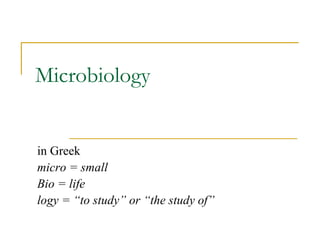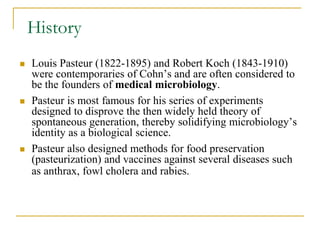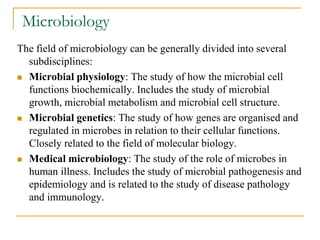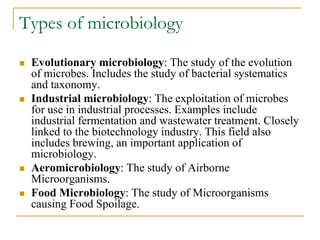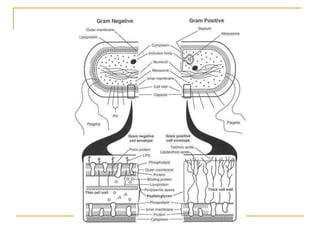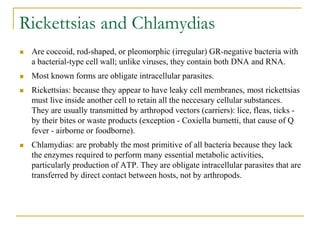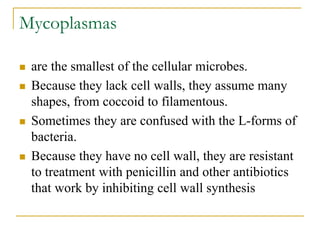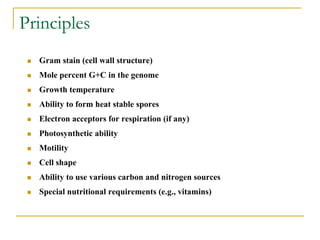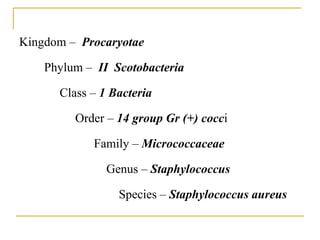Microbiology is the study of microorganisms, which are unicellular or cell-cluster microscopic organisms. This includes bacteria, fungi, protozoa, and some algae. Bacteria were first observed in the 1670s and microbiology has since developed into a field that utilizes biochemistry, genetics, and other disciplines to study microbes. While much is now known, only about 1% of microbes have been studied so far. Microbiology is divided into subdisciplines that examine topics like microbial physiology, genetics, roles in medicine/veterinary science, and more. Bacteria are classified based on traits like their cell structure, metabolism, habitat, and more.
